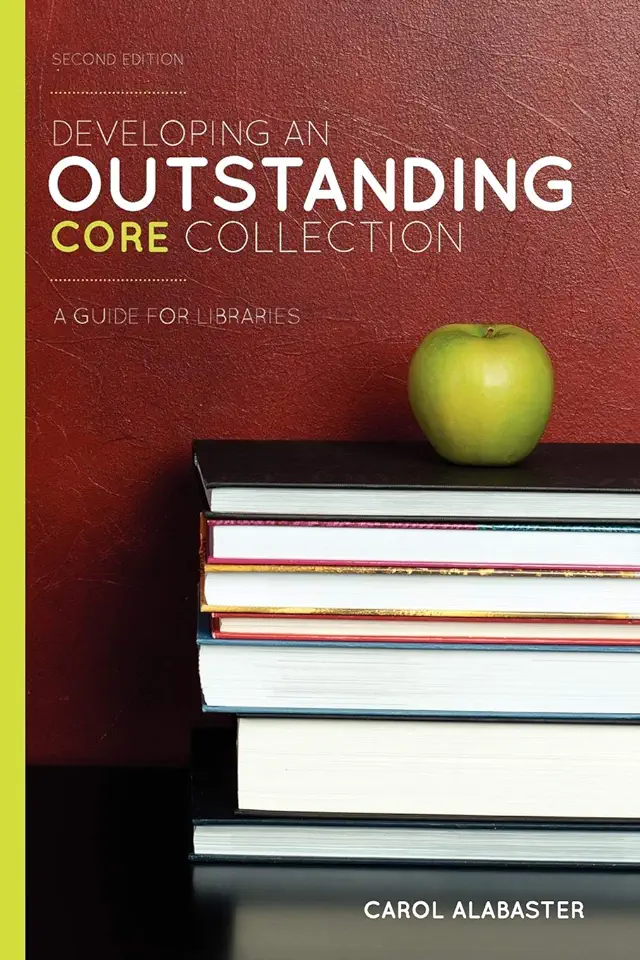
Developing An Outstanding Core Collection - Carol Alabaster
Developing An Outstanding Core Collection: A Comprehensive Guide for Librarians
Introduction
In today's rapidly evolving information landscape, libraries face the daunting task of building and maintaining a core collection that meets the diverse needs of their users. With limited resources and an overwhelming array of available materials, librarians must make informed decisions about which resources to acquire and how to organize them to ensure optimal access and utilization.
The Importance of a Well-Developed Core Collection
A well-developed core collection serves as the foundation of any library, providing essential resources that support the educational, research, and recreational needs of users. It encompasses a wide range of materials, including books, journals, databases, and multimedia resources, carefully selected to align with the library's mission and the interests of its user community.
Key Principles for Developing an Outstanding Core Collection
Carol Alabaster's book, "Developing An Outstanding Core Collection," offers a comprehensive guide to help librarians build and manage a core collection that exceeds expectations. Drawing on her extensive experience in library management, Alabaster presents a wealth of practical strategies and insights to guide librarians through the complex process of collection development.
Understanding User Needs
The cornerstone of a successful core collection lies in a deep understanding of user needs. Alabaster emphasizes the importance of conducting thorough user surveys, analyzing circulation data, and engaging in ongoing dialogue with users to identify their preferences, research interests, and information-seeking behaviors. By tailoring the collection to the specific needs of the user community, libraries can ensure that their resources are relevant, accessible, and utilized to their full potential.
Collection Development Strategies
Alabaster presents a range of collection development strategies to help librarians make informed decisions about resource selection. These strategies include:
Needs-based selection: Prioritizing the acquisition of resources that directly address the needs and interests of the user community.
Balanced coverage: Ensuring a well-rounded collection that covers a variety of subjects and viewpoints, catering to the diverse interests of users.
Currency and relevance: Keeping the collection up-to-date with the latest research and trends, while discarding outdated or irrelevant materials.
Cost-effectiveness: Optimizing resource allocation by carefully considering the cost of materials and their potential impact on the collection.
Organizing and Managing the Core Collection
A well-organized and efficiently managed core collection enhances user experience and facilitates resource discovery. Alabaster provides practical guidance on organizing the collection, including:
Classification and shelving: Implementing effective classification systems and shelving arrangements to ensure easy browsing and retrieval of materials.
Cataloging and metadata: Creating accurate and comprehensive catalog records, including metadata that enables efficient searching and discovery.
Access and delivery: Providing convenient access to resources, both physically and electronically, to accommodate the diverse needs of users.
Evaluating and Updating the Core Collection
A core collection is not static but rather a dynamic entity that requires ongoing evaluation and updating to maintain its relevance and effectiveness. Alabaster discusses various methods for evaluating the collection, such as:
Usage statistics: Analyzing circulation data and user feedback to identify popular and underutilized resources.
Collection audits: Conducting periodic reviews of the collection to assess its strengths and weaknesses, and identify gaps that need to be filled.
Emerging trends: Staying abreast of emerging trends in scholarship, research, and popular culture to ensure the collection remains current and responsive to user needs.
Conclusion
"Developing An Outstanding Core Collection" is an indispensable resource for librarians seeking to build and manage a core collection that exceeds expectations. Carol Alabaster's comprehensive guide provides a wealth of practical strategies, insights, and best practices to help librarians make informed decisions about resource selection, organization, and management. By following the principles outlined in this book, libraries can create a core collection that empowers users, supports their educational and research endeavors, and fosters a culture of lifelong learning.